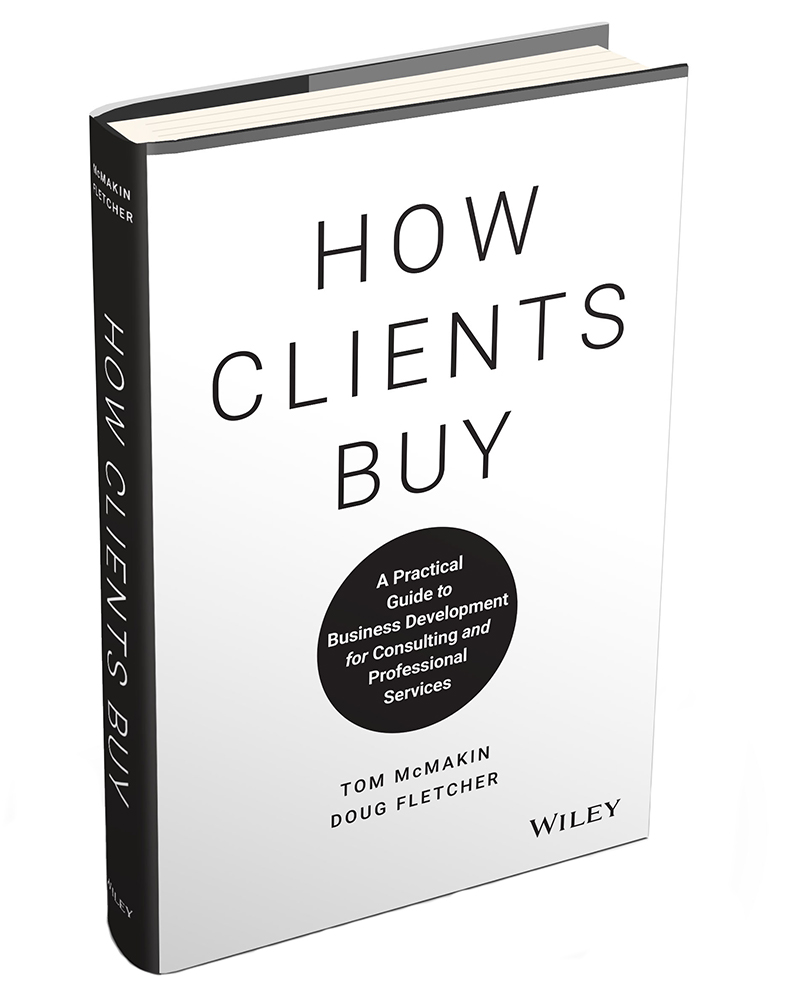Firm Management
How to be a Rainmaker
The question of how to sell professional services is an enduring one whose answer is being changed by technology. It wouldn’t matter if Ashish was a lawyer, web-designer or freelance architect, his challenge would be the same.
May. 15, 2018

Ashish looked out his office window on Broadway over at the Flatiron Building and counted the floors, calculating the approximate number of people who worked there. It was daunting. He had been a successful practice lead in an IT consulting firm in Atlanta and recently been asked by the CEO to plant the firm’s flag in Manhattan. Suddenly the landscape of opportunity seemed overwhelming. His firm had done good work, but where to get started in this massive market called New York? How was he going to make it rain.
The question of how to sell professional services is an enduring one whose answer is being changed by technology. It wouldn’t matter if Ashish was a lawyer, web-designer or freelance architect, his challenge would be the same. Services are sold differently than products. Whereas a laptop salesperson sells on features and attributes — think weight, size, cost, number of pixels — a professional services provider wins new business on reputation, referral and relationships.
Here are some tips from professional rainmakers
- Shrink the pond – If you can’t be a big fish in a big pond, then make the pond smaller. Successful professional service providers define niches they can own. Good: I work with retailers on merchandising. Better: I am the city’s number one coffee shop merchandiser. On average I increase per store sale by 23%. Good: I am an immigration attorney. Better: I specialize in helping West African asylum seekers navigate immigration law.
- Harness tech — Technology has made markets broader. It is now just as likely you will have clients in Singapore or Sidney as in Flatbush or Patterson. This turbo-charged ability to access potential buyers makes it more important than ever to narrow one’s focus. If you are just a tax accountant, you will be lost in an ocean of other tax accountants. If you are the world’s foremost tax advisor to sovereign wealth funds, you can dominate the niche. Specificity attracts. Who would you rather defend you in a divorce? The best divorce attorney in Harlem or a “we do it all” legal storefront?
- Narrowcast – Technology allow us to communicate with large amounts of people because it automates repetitive tasks. That sounds like a great deal. With the click of a mouse, you can flood the zone with whitepapers, LinkedIn posts, and email offers. Indeed there are software suites that let you track such outbound pushes and then the resultant inbound “demand.” Here is the truth, however. Increasingly, customers think of such broadcast efforts as the output of spam machines. Much better is to realize that there are two-hundred individual buyers who could make all the difference in your professional services practice and then narrowcast to them.
- Know Thyself – Ashish is overwhelmed by the size of Manhattan. Instead of counting floors, he should think about where he and his firm had success in Atlanta. Were they the IT service consultants of choice to mid-sized beverage distributors? His first job now that he is in the big city is to compile a list of mid-sized beverage distributors in the five boroughs. Then, vow to meet with each one over the course of a year sharing with them case studies of previous success.
- Underwrite a conversation – One the quickest ways to meet your “group of two hundred” is to underwrite a conversation between them. Let’s face it, they are more interested in their peers’ experience than they are in being pitched by you. Give them what they want – a sponsored lunch or conference call where you facilitate a best practices conversation between them. They will get to know you by your first name and appreciate the value you have given them in advance of any sort of sale.
- Stay proximate – By underwriting regular conversations between those with whom you most want to serve, you will also be hanging around the hoop. No one needs expert help until they do then they are in a hurry. This is the time to be top of mind. A firm experiences a cyber-security breach. Who do they call? Maybe the person they met three years ago at a conference, but more likely Georgia, the CEO CyberThreats, who sponsors the quarterly roundtable they find useful.
- Understand the buyer’s journey – Every potential client goes through the same steps in getting to know you and hiring you. They need to,
- Know your name (Awareness)
- Know what you do (Understanding)
- Feel like it is relevant to their job and business (Interest)
- Know you can do the job (Respect)
- Feel like you have your best interests at heart (Trust)
- Have the resources to hire you (Ability)
- Be ready to pull the trigger (Readiness)
The absence of any one of these elements can block you engaging with someone you can help. Make sure you go to market with a balanced approach. All billboards (Awareness) and no case studies (Respect) will keep you from connecting with potential clients.
We buy services from people we know, respect and trust or who are recommended by someone we know, respect or trust. Don’t be defeated by the enormity of our great city. Pick your niche and farm it diligently. In time you will reap the harvest.
—————=
Tom McMakin and Doug Fletcher are the authors of How Clients Buy: A Practical Guide to Business Development for Consulting and Professional Services (Wiley, 2018; www.howclientsbuy.net).
